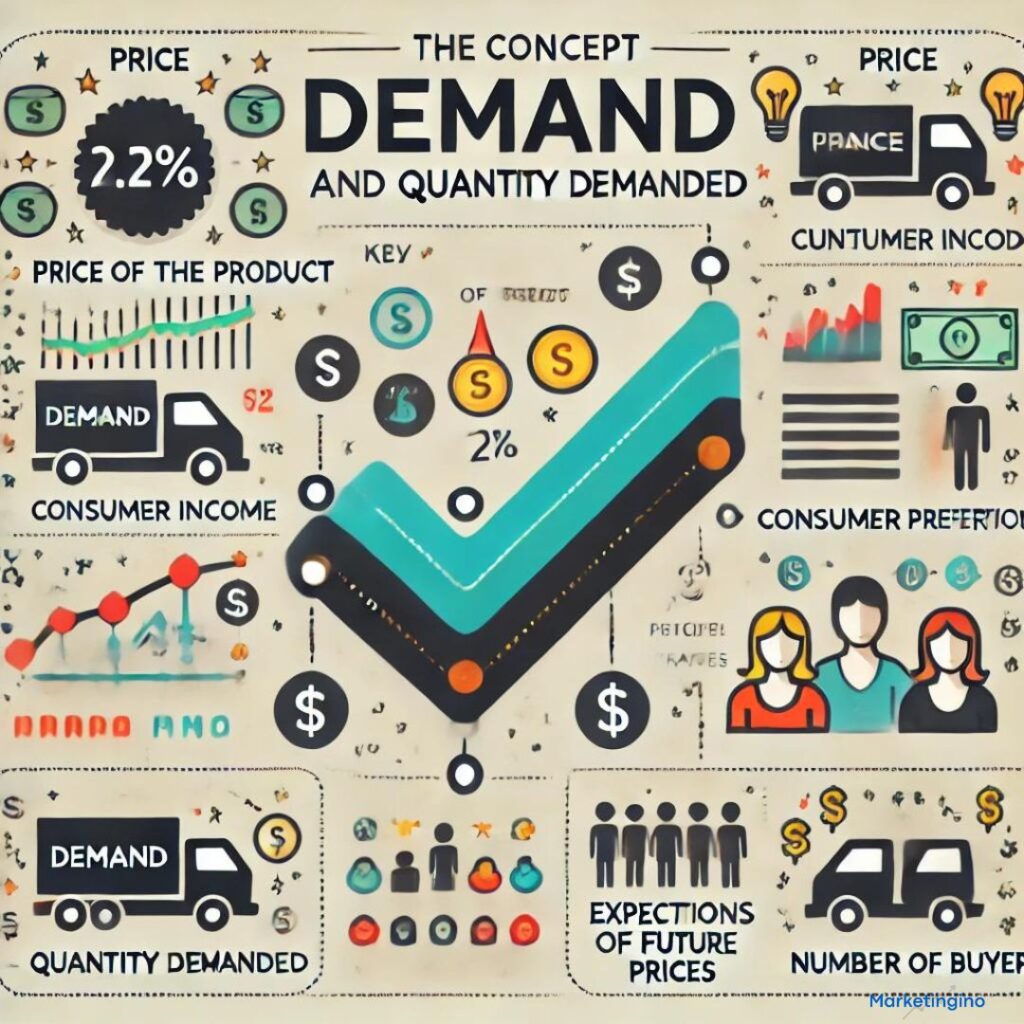Demand is a fundamental concept in economics that describes the quantity of a product or service that consumers are willing and able to purchase at various prices over a given period. It is a key driver of market dynamics, influencing production, pricing strategies, and economic policy. Understanding demand involves analyzing factors such as consumer preferences, income levels, price fluctuations, and market conditions.
The Concept of Demand
At its core, demand reflects the relationship between the price of a good or service and the quantity consumers are prepared to buy. This relationship is typically illustrated using a demand curve, which slopes downward from left to right, indicating that as prices decrease, the quantity demanded generally increases, and vice versa. This inverse relationship is known as the law of demand.
For instance, if the price of a smartphone drops, more consumers may find it affordable and desirable, leading to an increase in the quantity demanded. Conversely, if the price rises, fewer consumers may be willing or able to purchase it, reducing the quantity demanded.
Determinants of Demand
Several key factors influence demand:
- Price of the Product: The primary determinant of demand is the product’s price. Generally, a higher price leads to a lower quantity demanded, while a lower price results in a higher quantity demanded.
- Income of Consumers: An increase in consumer income typically boosts demand for goods and services as people have more purchasing power. Conversely, a decrease in income can reduce demand.
- Prices of Related Goods: The demand for a product can be affected by the prices of related goods, which include substitutes and complements. For example, if the price of tea increases, consumers might buy more coffee instead, increasing the demand for coffee (a substitute). If the price of printers drops, the demand for ink cartridges (a complement) might rise.
- Consumer Preferences: Changes in tastes and preferences can significantly impact demand. Trends, advertising, and shifts in societal values can alter consumer behavior and influence demand for certain products.
- Expectations of Future Prices: If consumers anticipate that prices will rise in the future, they may purchase more now, increasing current demand. Conversely, if they expect prices to fall, they might delay their purchases, reducing current demand.
- Number of Buyers: The size of the consumer base directly affects demand. A larger population or an increase in the number of buyers in a market will generally boost demand for a product.
Types of Demand
Demand can be categorized in several ways, reflecting different aspects of consumer behavior and market conditions:
- Individual vs. Market Demand: Individual demand refers to the quantity of a product a single consumer is willing to buy at various prices. Market demand aggregates the individual demands of all consumers in a market.
- Elastic vs. Inelastic Demand: Demand elasticity measures how sensitive the quantity demanded is to price changes. Elastic demand means a small price change causes a significant change in quantity demanded. Inelastic demand means quantity demanded is relatively insensitive to price changes.
- Derived Demand: This occurs when the demand for one good is linked to the demand for another. For example, the demand for steel is derived from the demand for cars and construction.
- Joint Demand: This occurs when the demand for two goods is interconnected, such as smartphones and mobile apps.
Measuring Demand
Economists and businesses use various methods to measure demand. These include:
- Surveys and Market Research: Gathering data directly from consumers about their purchasing intentions and behavior.
- Historical Sales Data: Analyzing past sales trends to predict future demand.
- Econometric Models: Using statistical methods to estimate demand based on various economic variables.
- Experiments: Conducting controlled experiments to observe how changes in price or other factors affect demand.
The Importance of Understanding Demand
For businesses, understanding demand is crucial for several reasons:
- Pricing Strategies: Knowledge of demand elasticity helps businesses set optimal prices to maximize revenue and profit.
- Production Planning: Accurate demand forecasts enable efficient production planning, inventory management, and supply chain operations.
- Market Entry: Understanding demand helps businesses assess the viability of entering new markets or introducing new products.
- Policy Making: Governments use demand analysis to design policies that stabilize markets, control inflation, and promote economic growth.
Demand is a dynamic and multifaceted concept that plays a vital role in shaping economic activities. By understanding the factors that influence demand and how it responds to changes in price and other variables, businesses and policymakers can make informed decisions that drive growth and stability in the economy. Whether through analyzing market trends, conducting consumer surveys, or employing advanced econometric models, the study of demand remains a cornerstone of economic analysis and strategy.




